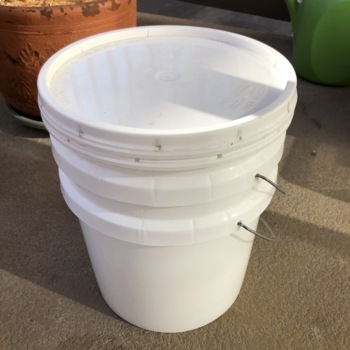Classroom Bokashi Composting Manual
Watts Educational
2 Followers
Grade Levels
PreK - 12th, Higher Education, Adult Education, Homeschool
Subjects
Resource Type
Standards
NGSSHS-LS2-3
NGSSMS-LS2-3
NGSSMS-LS2-5
NGSS5-LS2-1
NGSSMS-LS2-1
Formats Included
- Google Docs™
Watts Educational
2 Followers

Made for Google Drive™
This resource can be used by students on Google Drive or Google Classroom. To access this resource, you’ll need to allow TPT to add it to your Google Drive. See our FAQ and Privacy Policy for more information.
Description
Composting at a school-site has a unique set of challenges. The simple, effective method of bokashi composting detailed in this manual is all you need to start composting in your class right away! The information here is sure to be helpful for composting newbies and seasoned composters.
Total Pages
Answer Key
N/A
Teaching Duration
N/A
Report this resource to TPT
Reported resources will be reviewed by our team. Report this resource to let us know if this resource violates TPT’s content guidelines.
Standards
to see state-specific standards (only available in the US).
NGSSHS-LS2-3
Construct and revise an explanation based on evidence for the cycling of matter and flow of energy in aerobic and anaerobic conditions. Emphasis is on conceptual understanding of the role of aerobic and anaerobic respiration in different environments. Assessment does not include the specific chemical processes of either aerobic or anaerobic respiration.
NGSSMS-LS2-3
Develop a model to describe the cycling of matter and flow of energy among living and nonliving parts of an ecosystem. Emphasis is on describing the conservation of matter and flow of energy into and out of various ecosystems, and on defining the boundaries of the system. Assessment does not include the use of chemical reactions to describe the processes.
NGSSMS-LS2-5
Evaluate competing design solutions for maintaining biodiversity and ecosystem services. Examples of ecosystem services could include water purification, nutrient recycling, and prevention of soil erosion. Examples of design solution constraints could include scientific, economic, and social considerations.
NGSS5-LS2-1
Develop a model to describe the movement of matter among plants, animals, decomposers, and the environment. Emphasis is on the idea that matter that is not food (air, water, decomposed materials in soil) is changed by plants into matter that is food. Examples of systems could include organisms, ecosystems, and the Earth. Assessment does not include molecular explanations.
NGSSMS-LS2-1
Analyze and interpret data to provide evidence for the effects of resource availability on organisms and populations of organisms in an ecosystem. Emphasis is on cause and effect relationships between resources and growth of individual organisms and the numbers of organisms in ecosystems during periods of abundant and scarce resources.


